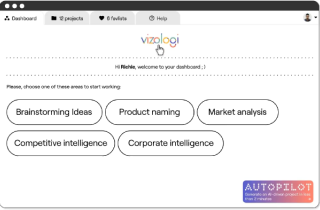Classifying Change: What Are the 2 Types of Disruptive Innovations?
With the ever-evolving business landscape, change is not only inevitable but also a vital component for survival and growth. The nature of these changes and their subsequent implications can differ dramatically based on various factors, including the type of innovation. This comprehensive article will explore two notable forms of disruptive innovation: sustaining and disruptive innovation.
Each has unique impacts and methodologies, but they all provide valuable insights into the dynamic business environment prevalent in today’s volatile and competitive market.
A Closer Look at The Concept of Sustaining Innovation
Sustaining innovation is centered on addressing the needs of existing customers by developing superior products aimed at scaling up revenue. This method manifests when a technology company, for instance, rolls out an updated version of its popular smartphone loaded with enhanced features and capabilities, serving as prime example of sustaining innovation.
Other embodiments of this type of innovation can be seen when a beverage manufacturer revamps its package design or introduces a new flavor, adding a fresh spin to their established line of products.
Comprehending the Essence of Disruptive Innovation
Disruptive innovation has two distinct types. The first kind involves a company unsettling the existing stable market by focusing on the less profitable segments. This strategic shift compels dominant companies to relocate to more lucrative market segments, eventually sidelining them from the competition. A relatable example is observed when budget airlines disrupt established airlines by catering to budget-conscious travelers.
The second variant of disruptive innovation is the introduction of technological shifts that drastically revamp industries. The replacement of traditional cable TV with on-demand streaming services evidences this. Incorporating these variations of disruptive strategies becomes crucial for companies to stay competitive in the rapidly altering marketplace.
Drawing Parallels Between Sustaining and Disruptive Innovation: An In-depth Study of Their Unique Characteristics

Exploring Their Impact on Quality and Performance
Disruptive innovation is pivotal in influencing a product’s quality and performance metrics. Despite sustaining innovations consistently augmenting feature upgrades, disruptive progressions tend to trigger ground-breaking advancements that invariably push companies to morph their approach toward product development and evolution.
For instance, introducing digital cameras revolutionized photography through instant previews, high-resolution image quality, and seamless photo sharing. Concurrently, the launch of electric vehicles, offering enhanced performance, reduced carbon emissions, and an escape from fossil fuel dependency, depicts the immense potential of disruptive innovation.
Identifying the Core Audience
Disruptive innovation hinges on a deep understanding of the unique needs and preferences of the target customers, thereby facilitating effective market disruption. For instance, disruptive revolutions addressing the fast-food industry may pivot toward offering healthier alternatives in response to the rising demand for balanced meals. By focusing on this under-addressed market, such an innovative firm can captivate health-conscious consumers, potentially drawing customers away from competitors.
Implications of the Business Model
The impacts on a business model sharply highlight the differences between the two types of disruptive innovations. While sustaining strategies aim to enhance existing customers’ product offerings to boost profitable margins, disruptive versions involve smaller companies unseating established companies by targeting niche, less profitable market segments, consequently compelling them to compete in higher market segments and eventually fade out.
Unfolding Disruptive Innovation: A Detailed View on the Two Types

Sustaining innovation mainly focuses on retaining customers and scaling profit margins through improved product line-up. A smartphone company rolling out updates or more advanced versions of their models exemplifies this. Conversely, disruptive innovation occurs when a visionary firm disrupts a settled business model by targeting underserved or niche market segments. An instance of this is when a budget airline introduces competitively priced fares to cater to cost-sensitive travelers.
The Significance of Disruptive Innovation
Disruptive advancements pose a formidable challenge to incumbent companies by spotlighting less profitable market segments. The ascent of digital photography, which usurped the traditional film photography industry, is a model illustration. Similarly, the entertainment industry also witnessed a seismic shift with the advent of online streaming as a formidable alternative to traditional viewing modes.
Real-World Illustrations of Disruptive Innovation
Tangible illustrations of disruptive innovation mirror its widespread prevalence across varied industries. From the rise of online streaming platforms causing a significant disruption in the television industry to the emergence of ride-sharing apps that disrupted the traditional taxi business, disruptive innovation has unquestionably transformed the modus operandi of various industry segments, aptly catering to evolving consumer expectations.
Exploring Potential Use Cases of Disruptive Innovation across Diverse Commercial Sectors
Disruptive strategies can potentially create lasting impacts across a wide array of sectors. Ride-sharing services disrupted regular taxi services by offering a more convenient, budget-friendly commute option. Another notable example is telemedicine, which has dramatically reshaped patient care through remote consultations, posing a direct threat to the standard care model.
Breeding a Disruptive Mindset for Innovation

Fostering a disruptive mindset essentially involves striking a balance between implementing sustaining and disruptive strategies. This judicious blend helps businesses evade disruption and aptly respond to fluctuating market dynamics, fostering continuous evolution and growth for the company.
Strategic Approaches to Gain a Comprehensive Understanding and Experience in Disruptive Innovation
Achieving a comprehensive understanding and gaining experience in disruptive innovation requires a multipronged approach. Businesses must cultivate a culture of in-depth research, stress experimentation, promote collaboration, improve customer engagement, and endorse a diversified workforce. Disruptive innovation goes beyond product development; it necessitates challenging the status quo and redefining existing business strategies.
Employing these techniques will aid firms in staying adaptive and responsive to market changes and shifts.

Vizologi is a revolutionary AI-generated business strategy tool that offers its users access to advanced features to create and refine start-up ideas quickly.
It generates limitless business ideas, gains insights on markets and competitors, and automates business plan creation.


